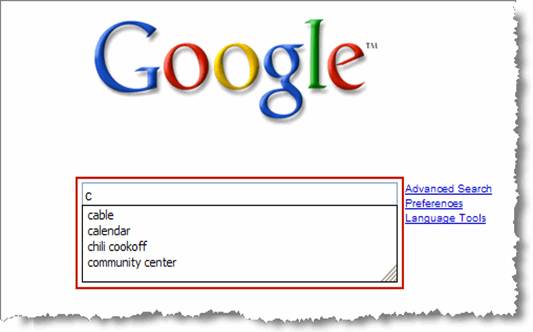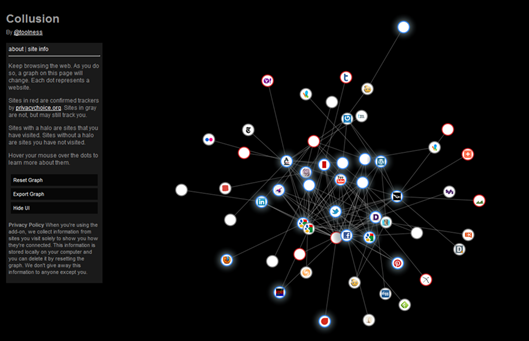We investigate who’s keeping tabs on
your online activities and what you can do about it?
The Internet us undoubtedly one of the
great inventions of the modern age. Never have so many people had access to so
much free information. Never have so many people had access to so much free
information, while project such as Wikipedia have shown what can be achieved
when the power of the masses is harnessed to achieve a common goal.
Whereas previous generations turned to the
Encyclopaedia Britannica in their quest for knowledge, provided that they were
fortunate enough to own the multi-volume respository, people now access its
online contemporaries: Google, Wikipedia, even Twitter. The Encyclopaedia
Britannica is itself available in subscription-based online form, and the
ability to frequently update the information it provides means it’s now more
reliable as a research tool.

The
Internet us undoubtedly one of the great inventions of the modern age
Social media has also grown at a phenomenal
rate, and with it transformed our ability to communicate on a wider scale.
Tracking down old friends and colleagues is no longer the preserve of amateur
detectives with a battered book of phone numbers and addresses circa-1993;
today, more often than not, you can simply log into Facebook and type in their
name.
We have available to us an incredible
number of free online services – Skype, Gmail, Google Docs, Twitter, Facebook,
Dropbox… many have become an essential part of our daily lives. For consumers,
this truly is a golden age for technology. But what do the sites and services
themselves get out of it?
The hidden costs of free services
We know that business need to make money to
even exist, let alone thrive. Google’s data centres are famously home to
thousands of computers, each holding fragments of the world wide web. Around 48
hours of video is uploaded to YouTube every minutes, which translates to eight
countries, with some 900 million monthly active user accounts.
We don’t pay to search, upload badly taken
photographs of schools plays, or watch little pandas sneezing, yet Google is
one of the most profitable companies in the world and Facebook is valued at
$99bn.

We
don’t pay to search, upload badly taken photographs of schools plays, or watch
little pandas sneezing
So how do they do it? What’s the secret to
their success? Technical brilliance aside, the answer is very simple: you. Or
more accurately, what you like and what you might want to buy.
The free services we access on a daily
basis are watching us where we go, what we do and using that information to
provide their advertised, or even other companies’ advertisers, with profiles
that enable them to sell to us more effectively and increase the chance that we
will click the ‘Add to basket’ button.
Remember that old phrase: if you’re not
paying for it, you’re not the customer; you’re the product being sold.
Me and my shadow
During his recent TED talk, ‘Tracking the
Trackers’, Mozilla CEO Gary Kovacs discussed the idea of behaviour tacking and
its proliferation across the web. In essence, when you visit a website a cookie
is created in your browser that allows the site to know you are there and help
it to perform basic tasks, such as maintaining the contents of your shopping
basket while you continue browsing the site.
Cookies can also gather information on the
pages you visit and items on which you click, so that the content you’re
offered is more relevant. Generally, cookies enhance the browsing experience
(try disabling them in your browser’s privacy settings to see just how clunky
the web can be) and often save you from having to log in or set preferences
each time you visit a site. All this is perfectly acceptable, helpful even; more
worrying is the fact the behaviour Kovacs discussed can continue after you
leave the site.
You might expect a site to retain the
information on the cookie for the duration of your stay, then for that cookie
to become insert when you leave. This isn’t always the case. Third-party
cookies can continue watching your movements, sometimes across several sites to
none of which you have given your consent.
The effects are easy to observe – in fact,
you’ve probably already seen them. Search for details on, say, Batman, and it
won’t be long until related products begin appearing in the advertisements on
other sites you visit, sometimes with unnerving accuracy.
This is made possible by the relationships
between the host sites and online advertising companies, such as
scorecardresearch.com, tribalfusion.com and doubleclick.net. The idea is to
provide you with a tailored experience, and tempt you to make a purchase.

Collusion
displays tracking cookies in a similar fashion to cells under a microscope
Revenue generated from these advertisements
is staggering. In 2011, Google was reported to have made $55.5bn, with nearly
all of this derived through AdWords and AdSense. Facebook also ranked in a
respectable $5.55bn, with 85 percent the profits of advertising. It’s no surprise
that companies are keen to know what we want to buy, and the most effective way
to place those products in front of us.
The idea of our habits monitored especially
by those who would hope to seek profit, is an uncomfortable truth that
accompanies our heavily interconnected online world. Gary Kovacs puts in very
eloquently: “We are like Hansel and Gretel, leaving breadcrumbs of our personal
information everywhere we travel through the digital woods.”
To observe tracking, Mozilla has developed
the Collusion Project, available as a Firefox plug-in, which displays tracking
cookies in a similar fashion to cells under a microscope. It doesn’t take long
for those cells to multiply.
“On a technical level, Collusion plugs into
your browser and watches all these requests to websites and third parties
involving cookies,” explains Mozilla’s Ryan Merkley. “Firefox already makes a
record of some of this (your browsing history) and Collusion is recording a
little bit more so it can be drawn on your screen. The more you browse, the
more Firefox and Collusion accumulate about relationships, and your graph gets
larger.”
That’s something of an understatement. In
our own experiment we cleared the browser history, installed Collusion, then
visited some of our bookmarked sites: The Guardian, Football365, Facebook,
Twitter and a few others. After viewing just nine sites, and spending less than
20 minutes online, we had been tracked by third-five cookies.
In another test we reset the browser and
visited the site of a popular high-street videogame retailer; the results were
startling. Just by landing on the home page we saw 11 third-party links appear
on our Collusion graph. Ryan Merkley’s initial experience of the application
was equally concerning.
“I first tried Collusion when one of our
engineers hared an early proof of concept,” he says. “I was shocked at the
number of trackers and, most of all, by the number of times a very small group
of trackers showed up. Those few trackers know more about my combined browsing
habits than any website ever would. it made me want to know how they use that
data, and have a tool to decide for myself whether they would be able to
collect my data at all.”